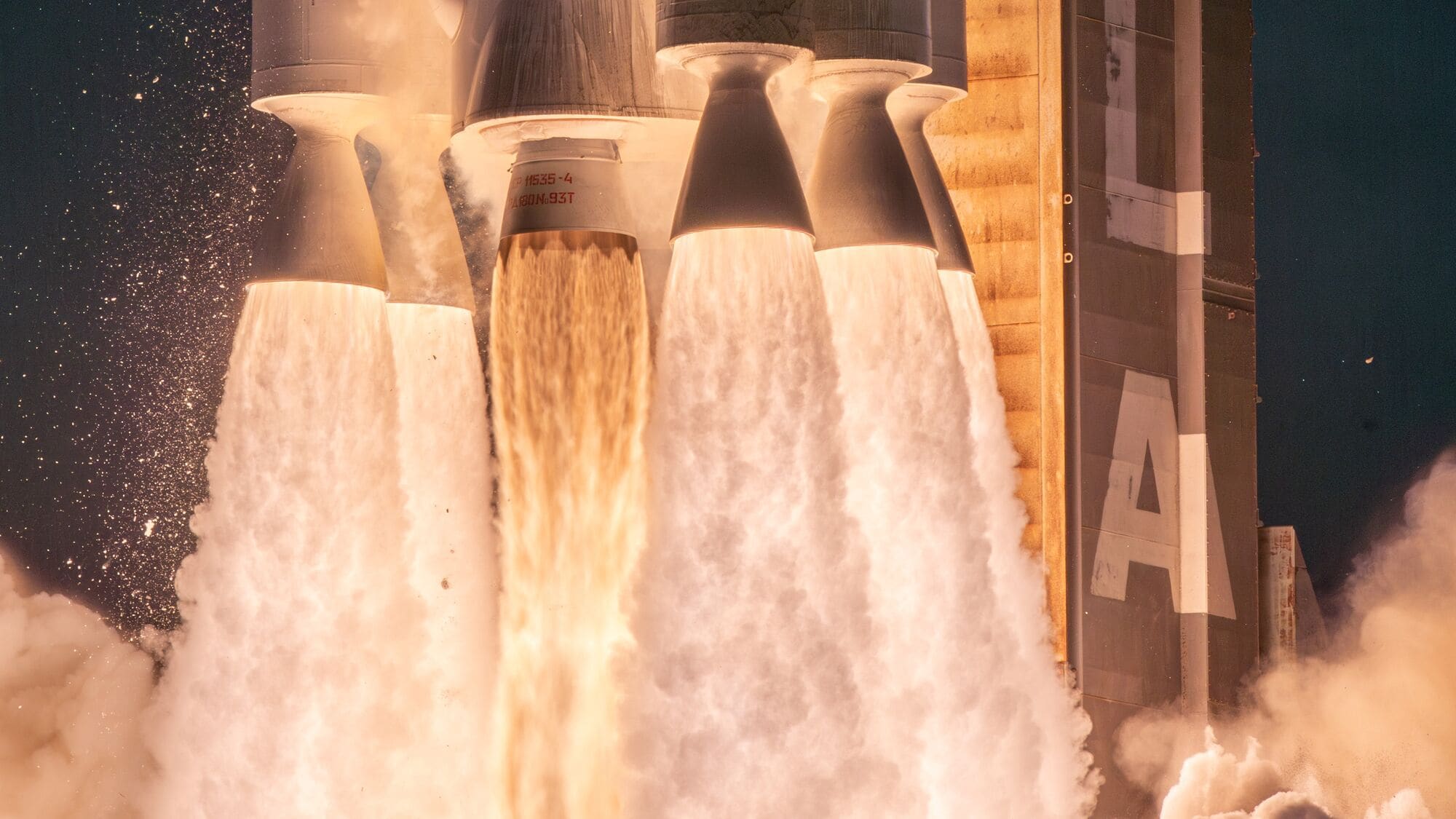Project Kuiper, Amazon’s low Earth orbit (LEO) satellite network designed to deliver broadband connectivity to customers and communities worldwide, is entering a phase of sustained deployment. After reaching more than 100 operational satellites in recent months, the company has confirmed its fifth launch of the program — KA-03 — with United Launch Alliance (ULA) scheduled for Thursday, September 25 at 08:09 EDT from SLC-41 at Cape Canaveral Space Force Station.
The immediate goal: place 27 additional satellites into orbit at around 450 kilometers altitude, then raise them to their assigned orbit of 630 kilometers. With this flight, Kuiper will have deployed 129 satellites within an initial planned constellation of more than 3,200.
A steady rhythm: from validation to a “launch train”
Amazon began the initial deployment of the constellation in April 2025 with KA-01 (Atlas V 551, 27 satellites). Following this milestone, the sequence included:
- KA-02 (ULA Atlas V 551): June 23, 2025, 27 satellites.
- KF-01 (SpaceX Falcon 9): July 16, 2025, 24 satellites.
- KF-02 (SpaceX Falcon 9): August 11, 2025, 24 satellites.
The combination of Atlas V and Falcon 9 has enabled Kuiper to maintain a monthly cadence during the summer and to prepare for its fifth flight (KA-03) with ULA. Operations are coordinated from a 24/7 control center in Redmond, Washington, where the team assumes control after separation from the launcher, verifies the health of each platform, and executes orbital ascent to the target altitude.
Florida, an industrial hub: a $140 million center to parallel campaigns
To sustain the schedule — over 80 missions in total to complete the first phase of the constellation — Amazon has invested $140 million in an integration center at Kennedy Space Center (Florida). This facility can prepare up to three simultaneous launch campaigns, reducing turnaround times between missions and increasing resilience in the logistics chain (integration, testing, encapsulation, and ramp transportation).
Kuiper’s goals: global coverage, low latency, and retail offerings
The program’s mandate is clear: provide fast, reliable internet to regions without coverage or with expensive, low-quality services through compact user terminals and an integrated terrestrial backhaul connected to Amazon’s cloud. Operating at around 630 km altitude, the constellation aims to deliver significantly lower latencies than traditional GEO networks, a key factor for enterprise, educational, and telemedicine applications.
Although the commercial product is not yet widely available, the existing satellite count allows Amazon to accelerate validation, expand test areas, and prepare for the initial service rollout in prioritized regions based on deployment progress.
Architecture and operations: from 280 to 630 km
Each Kuiper mission releases the batch of satellites into an initial orbit of ~450 km. From there, teams in Redmond handle:
- Telemetry acquisition and subsystem verification (power, attitude control, propulsion, communications).
- Executing maneuvers to raise the orbit to ~630 km and phase each satellite in its assigned plane/slot.
- Activating payloads and linking with ground stations and Amazon network centers.
This sequence allows abort or reconfigure safely in case of issues during the first hours of a satellite’s life, reducing risks to the nominal positions of the constellation.
Schedule: Mission KA-03 (Atlas V 551)
- Name: KA-03 (Kuiper Atlas 3)
- Rocket: ULA Atlas V 551
- Date/Time: Thursday, September 25, 2025, 08:09 EDT
- Number of satellites: 27
- Location: SLC-41, Cape Canaveral Space Force Station
- Altitudes: insertion at ~450 km; service orbit ~630 km
- Tracking: mission page ULA Kuiper-3 (with livestream on launch day)
Kuiper figures (September 2025)
- Satellites deployed after KA-02/KF-01/KF-02: > 100
- Planned constellation (initial phase): > 3,200
- Expected missions to complete phase 1: > 80
- Florida integration hub: $140M, up to 3 simultaneous campaigns
- Operations: 24/7 center in Redmond, WA
Market context: an expanding oligopoly
The LEO broadband market is entering a phase of sustained competition: alongside the existing installed base of operational networks, Kuiper’s deployment adds capacity and, likely, new commercial models through Amazon’s retail/logistics ecosystem and its cloud infrastructure. For end-users and businesses, the medium-term outcome should be more options and better price-performance ratios, especially in rural or hard-to-reach areas.
Implications for integrators and partners
- User equipment: monitor roadmaps for terminals (flat antennas, power consumption, certifications) and regional SLA.
- Backhaul and peering: prepare interconnections with AWS and backbone networks for edge caching and latency reduction.
- Corporate cases: evaluate redundant hybrid connectivity options (terrestrial + LEO) in energy, logistics, and retail.
- Regulatory: keep an eye on licenses and spectrum usage by country, especially for public projects or tightly regulated sectors.
Next steps
With KA-03 on the ramp and a Florida center designed to parallelize campaigns, Kuiper is moving into an industrial scale phase. If the summer cadence continues into fall, Amazon can accelerate service testing, expand coverage demos, and approach the business milestone with a critical mass of satellites in orbit.
via: Amazon

